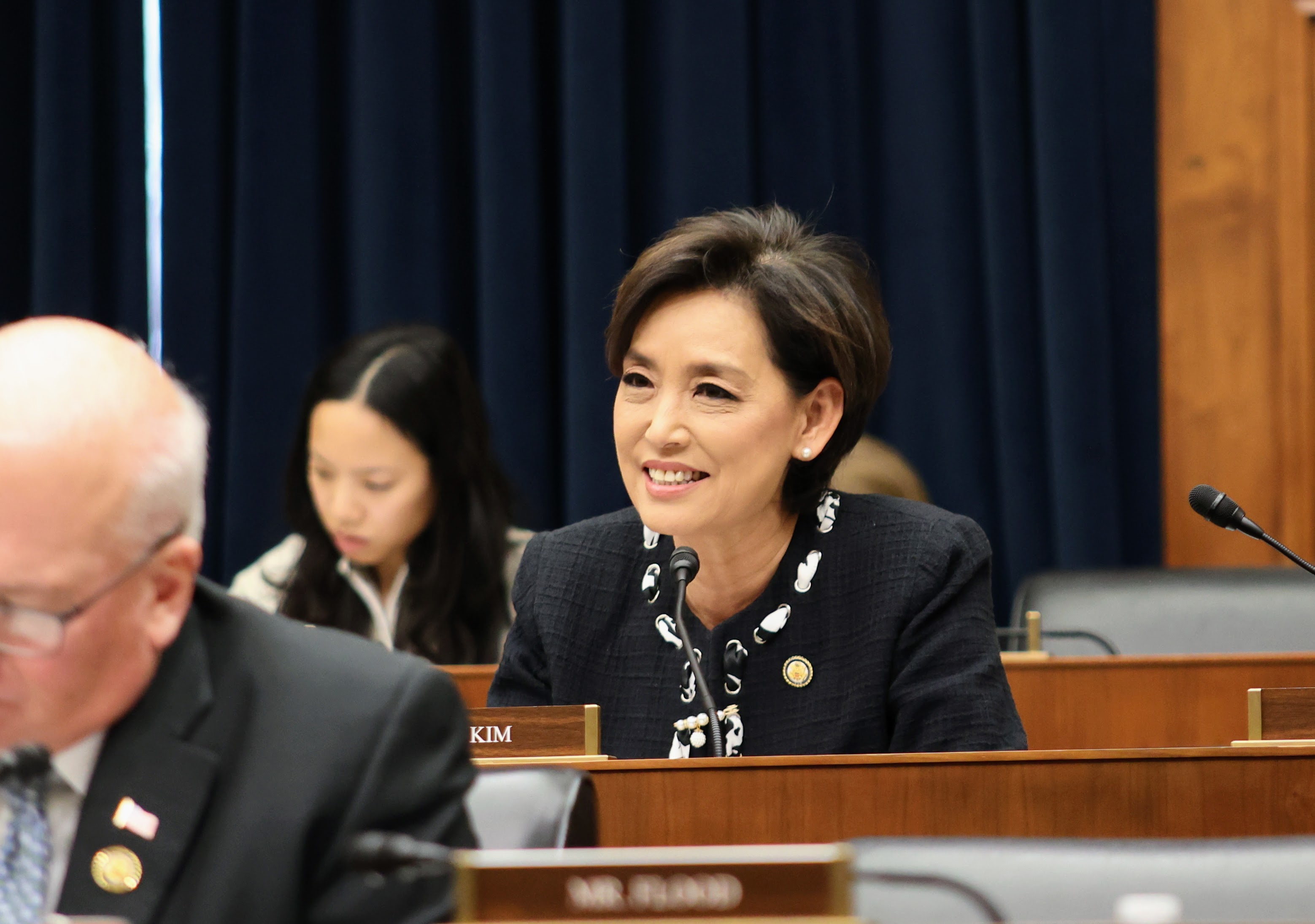Speaking to Fox News Channel on Nov. 14, House Minority Leader Kevin McCarthy (R-Calif.) declared 2020 the “year of Republican women.” As he proudly announced, more than half of the incoming House Republican members were women or people of color. And some, such as Reps. Young Kim and Michelle Steel of California, two of the first three Korean American women elected to Congress, were both. (Democrat Marilyn Strickland of Washington is the third.)
McCarthy’s mention of Kim’s Korean immigrant roots and reference to Steel’s was strategic. Party leaders like McCarthy seek to position figures like Kim and Steel as a rebuttal to charges that the GOP is anti-woman, anti-immigrant and White nationalist.
Orange County, which Kim and Steel represent, has been an important conservative bastion since the 1960s, when its voters helped launch politicians such as Ronald Reagan and Barry Goldwater to political stardom. Pundits and scholars have tracked the “OC” as a bellwether of demographic changes wrought by shifts in U.S. immigration policy, and its history offers insight into how the Republican Party has made inroads among women and voters of color. Although American conservatism remains largely White, it has slowly but surely become less so.
Before the 1965 Immigration and Nationality Act, immigrants moving to Orange County were overwhelmingly European. Reflecting a national trend, they are now majority Asian and Latino. The county’s Asian American population increased 41 percent between 2000 and 2010 alone, making the county home to the country’s third-largest Asian American population. Today, Asian Americans represent 6 percent of the U.S. population but 20 percent of Orange County’s residents.
U.S. cold wars in Asia and diasporic politics help explain this transformation — as well as why some Asian Americans lean right. Orange County is home to Little Saigon, one of the largest Vietnamese communities in the country. In 1992, residents of Westminster, Calif., propelled the first Vietnamese American elected official, Tony Lam, a Republican, to office in their city council. Other Asian Americans followed. Since many arrived as refugees fleeing U.S. wars in Southeast Asia in the 1970s and 1980s, Vietnamese Americans have been one of the only Asian ethnic groups where a majority reliably voted Republican because they are strongly anti-communist and socially conservative. Anti-Chinese attitudes have been another important factor. This is slowly changing, as younger, more progressive Vietnamese Americans come of age, but other parts of Asian America may compensate.
The conservatism of Vietnamese Americans reveals the political diversity of Asian Americans. Asian Americans have been called “the last undecided voters,” and nearly 2 in 5 are registered with neither political party. Asian Americans have trended Democratic overall since 2000, but like many Latino voters in Sun Belt states such as Florida and Texas, a growing plurality of Asian Americans vote for Republican candidates. They are part of the reason that, although Orange County sent its first all-Democratic delegation to Washington in 2018, Steel and Kim reversed this. Although Black Americans supported Democratic candidates nine times out of 10, Asian Americans, like Latino voters, inched toward Donald Trump. According to one study, the incumbent gained a whopping seven points among Asian American voters in November 2020.
Religion is a key factor in the receptiveness of some Asian Americans to the Republican message. It is no coincidence that Kim and Steel describe themselves as devout Christians who oppose abortion. Christians historically have been overrepresented among Koreans who immigrated, in part because of the influence of U.S. missionaries and parachurch ministries in East Asia. Other immigrants converted once in the United States.
In Orange County, new arrivals from Asia could choose among a wealth of immigrant churches and majority-White megachurches preaching a more conservative evangelical Christianity. Starting in the late 1990s and early 2000s, a small contingent of Asian American evangelicals in Orange County and California more broadly began rallying around “traditional family values” platforms opposing abortion and same-sex marriage — which had become standard GOP fare by the 1980s and 1990s. Some Korean church women were among this new wave of conservative activists. Like the community as a whole, most Asian American Christians lean left, but among the minority that votes Republican, the messages of groups such as the Family Research Council have resonated.
California’s multiracial electorate confounds many Americans accustomed to thinking of race in Black-White binary terms, even as its history reminds us that you don’t need a large Black population for anti-Blackness to remain a problem. One of the largest lynchings in American history, the killing of 17 Chinese people in the Chinese Massacre of 1871, took place in Los Angeles. In 1992, the acquittal of four police officers who brutally beat Rodney King sparked five days of protest and violence in the same city.
The Los Angeles riots marked the first time many news outlets discussed relations between Asian American and Black communities in a nationally visible way. The complexities of what happened were lost on journalists content to sensationalize interracial conflict while ignoring the longer history of housing and labor policies rooted in White supremacy that landed these groups in the same divested neighborhoods in the first place. Then, as now, the casting of Asian immigrants as model minorities allowed state officials and other observers to weaponize Asian American “success” against other racialized communities and obscure how systemic racism affects all of them, albeit in different ways.
The combination of religious messaging and diasporic politics has created an opportunity that the GOP has pounced on by nominating and electing Asian American candidates, especially women. In 2014, for the same election that put Young Kim in the California State Assembly, the county’s voters also elected Vietnamese American Janet Nguyen and Taiwan-born Ling Ling Chang to the state Senate and Assembly, respectively. Dozens more Asian American Republican men and women serve in local and county office. Yet, these Asian Americans are not simply carbon copies of their White Republican colleagues. Kim and Steele have both invoked their personal histories to challenge the GOP stance on certain immigration-related issues. For example, Kim is a vocal supporter of Deferred Action for Childhood Arrivals (DACA). Having pledged to vote her mind, even when it diverges from the official GOP line, Kim was also one of the few House Republicans to vote to remove fellow Republican newcomer and previous QAnon supporter Marjorie Taylor Greene of Georgia from her committee assignments.
These Orange County Republicans offer a blueprint for how political parties can target Asian American voters. And there is growing incentive to do so, as Asian Americans are the fastest-growing racial group in the U.S. electorate. Today, the county looks more and more like other parts of the Sun Belt with a rising population being increasingly suburban and Asian. Since 2010, the number of Asian Americans in Florida and Pennsylvania has grown by more than 80 percent. Three of the states with the largest jump in Asian American population are part of the Sun Belt: Arizona, Nevada and North Carolina. Georgia is not far behind.
As Randall Avila, the executive director of the Orange County Republican Party, told the New Yorker recently, Republicans there have developed a strong ground game. For decades, they have sent representatives to every national naturalization ceremony in the county; translated campaign materials into Korean, Chinese and Vietnamese and recruited volunteers and partners from within those communities to canvass voters and cultivate candidates. Democrats have recently tried to match these efforts. The 2018 blue wave that saw Democrats sweep the county’s seven U.S. House seats and reverse GOP gains in the California state legislature depended a good deal on voter registration campaigns and materials in multiple Asian languages.
While McCarthy stressed conservative voters’ fear of “socialism” as an important factor in Kim and Steel’s success, there is a more pragmatic lesson to draw from their recent election victories:Any party that wants to win the nation’s increasingly multiracial electorate has to meet people where they are — in their languages, at their events and with support from their communities — or risk ceding these voters to the other party for good.




